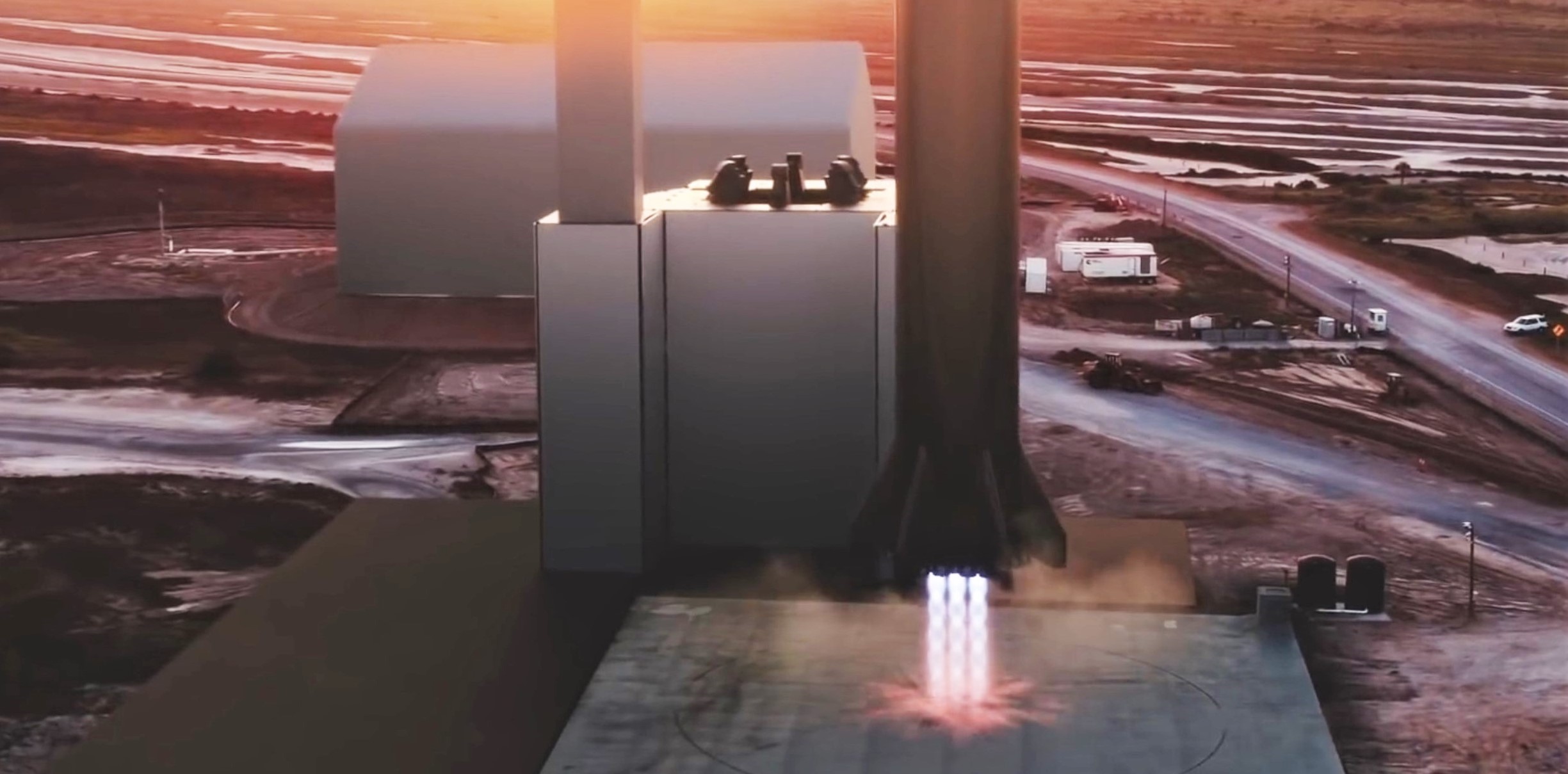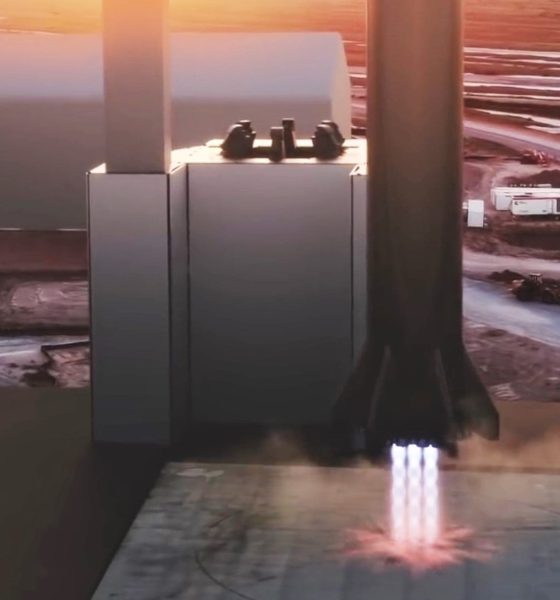Over the last few weeks, SpaceX’s Florida Starship launch pad construction has made some major progress and the structure that will one day support the first East Coast Starship and Super Heavy flight tests have grown several stories tall and show no signs of slowing down.
In a bid to make what could otherwise be an extremely expensive and time-consuming ordeal much faster and cheaper, SpaceX’s Starship/Super Heavy launch pads will be quite a bit different from the company’s several existing launch pads. This includes Kennedy Space Center’s LC-39A pad, leased and operated by SpaceX for Falcon Heavy and Crew Dragon missions and formerly used for dozens of Space Shuttle launches and all Saturn V Apollo Moon missions.
In a very on-brand move, SpaceX has decided to build Starship’s East Coast orbital pad within the bounds of Pad 39A but without using the pad’s existing launch mount or concrete flame trench. Instead, SpaceX is building a separate steel mount and water-cooled thruster diverter designed to stand up to the fury of a Super Heavy booster without allowing the rocket’s plume to dig a crater in the ground after ever ignition.
While choosing to pursue a dramatically different launch pad design for Starship may at first glance seem risky, SpaceX actually has more than a decade of experience building and operating similar mount and flame diverter setups at its McGregor, Texas rocket development and test facilities. A step further, NASA itself once heavily relied on similar technologies and strategies to rapidly build, test, and fly rockets larger than anything that came before them.
Most notably, the Saturn I rocket that preceded the massive Saturn V used a launch mount and flame diverter that looks quite similar to a conceptual setup SpaceX recently showed off in an updated Starship launch render.
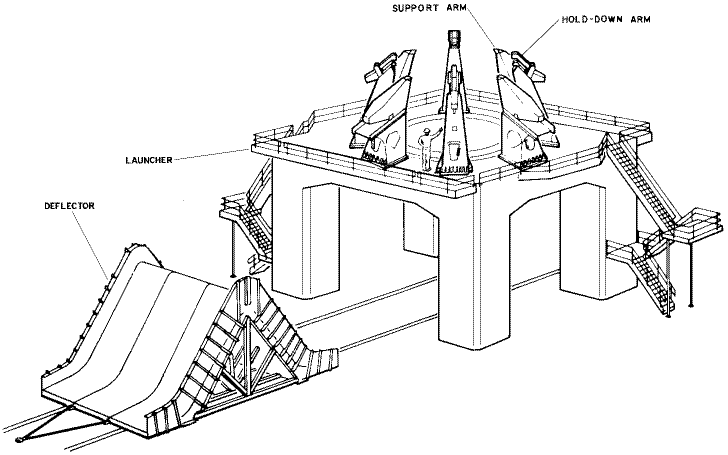
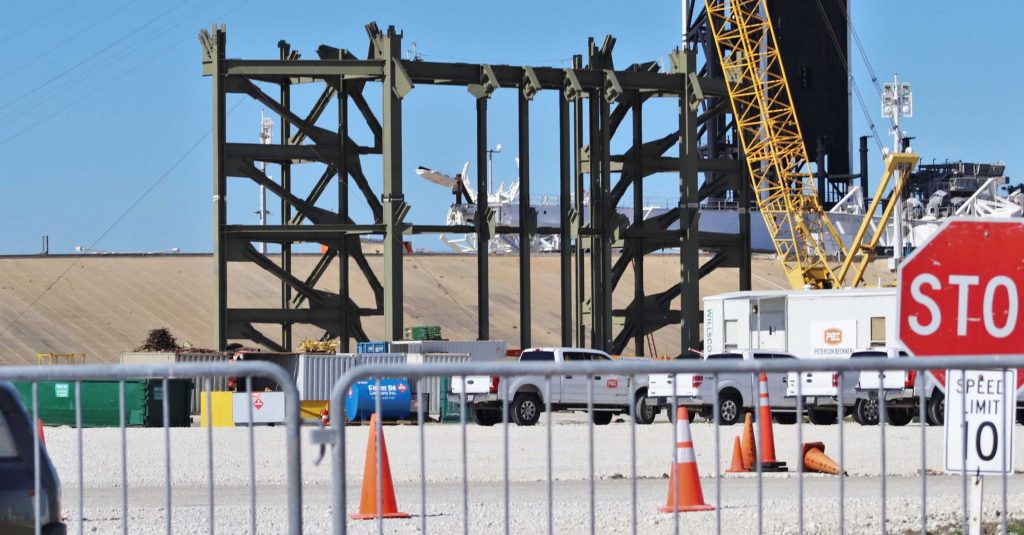
SpaceX’s Starship mount is substantially taller, has gone with steel instead of reinforced concrete, and will have a fixed flame deflector, but the similarities are otherwise significant. Conceptually, both mounts are topped with a flat surface with numerous support arms and a large cutout for the rocket to sit atop and its exhaust to exit through. Similar to Falcon 9, the single-core Super Heavy booster mount shown in SpaceX renders will likely have four hold-down clamps and two tail service masts (TSMs), umbilical connections that supply the rocket with propellant, electricity, connectivity, and any other required fluids.
As described and pictured above, Starship’s Pad 39A launch mount has rapidly grown from a few metal beams into a major structure in just the last few weeks. By rough estimate, the existing mount is already 20 or so meters (70+ ft) tall and has large mounts for the installation of additional structures on top of it, while the conceptual mount shown in SpaceX renders appears to be about 25-30 m (80-100 ft) tall.
In the last few days, technicians have begun installing the first framework of the flame diverter SpaceX will use to prevent Starship from damaging itself or its surroundings during static fires and launches. Given the fact that Starship’s Super Heavy booster – as currently described – will be the single most powerful launch vehicle in history, such a vast amount of energy is not easy to dissipate. To accomplish that task, SpaceX revealed in August 2019 planning documents that the 39A diverter would be water-cooled.
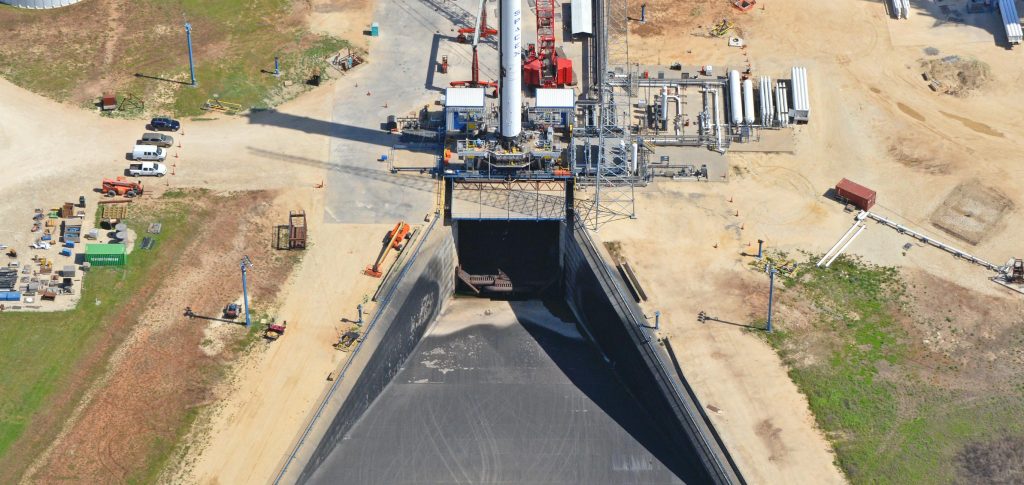
The largest thrust diverter SpaceX has built supports the company’s McGregor, Texas booster test stand and has supported dozens upon dozens of integrated static fire tests. Originally designed to enable integrated triple-booster Falcon Heavy testing, SpaceX ultimately decided not to use that capability but the diverter is still immense, likely measuring at least 15m (50 ft) tall and 10m (33 ft) wide. By building dozens of pipes into the surface and structure of the diverter and filling those pipes with recirculating water, it can survive several minutes of hot rocket exhaust without suffering catastrophic erosion or outright melting.
It’s safe to say that Super Heavy will require a diverter that is far larger still to survive thrust equivalent to more than three Falcon Heavy rockets, but that very diverter and launch mount are already well on their way to completion at SpaceX’s Kennedy Space Center launch pad.
Check out Teslarati’s Marketplace! We offer Tesla accessories, including for the Tesla Cybertruck and Tesla Model 3.

News
Tesla FSD fleet is nearing 7 billion total miles, including 2.5 billion city miles
As can be seen on Tesla’s official FSD webpage, vehicles equipped with the system have now navigated over 6.99 billion miles.

Tesla’s Full Self-Driving (Supervised) fleet is closing in on almost 7 billion total miles driven, as per data posted by the company on its official FSD webpage.
These figures hint at the massive scale of data fueling Tesla’s rapid FSD improvements, which have been quite notable as of late.
FSD mileage milestones
As can be seen on Tesla’s official FSD webpage, vehicles equipped with the system have now navigated over 6.99 billion miles. Tesla owner and avid FSD tester Whole Mars Catalog also shared a screenshot indicating that from the nearly 7 billion miles traveled by the FSD fleet, more than 2.5 billion miles were driven inside cities.
City miles are particularly valuable for complex urban scenarios like unprotected turns, pedestrian interactions, and traffic lights. This is also the difference-maker for FSD, as only complex solutions, such as Waymo’s self-driving taxis, operate similarly on inner-city streets. And even then, incidents such as the San Francisco blackouts have proven challenging for sensor-rich vehicles like Waymos.
Tesla’s data edge
Tesla has a number of advantages in the autonomous vehicle sector, one of which is the size of its fleet and the number of vehicles training FSD on real-world roads. Tesla’s nearly 7 billion FSD miles then allow the company to roll out updates that make its vehicles behave like they are being driven by experienced drivers, even if they are operating on their own.
So notable are Tesla’s improvements to FSD that NVIDIA Director of Robotics Jim Fan, after experiencing FSD v14, noted that the system is the first AI that passes what he described as a “Physical Turing Test.”
“Despite knowing exactly how robot learning works, I still find it magical watching the steering wheel turn by itself. First it feels surreal, next it becomes routine. Then, like the smartphone, taking it away actively hurts. This is how humanity gets rewired and glued to god-like technologies,” Fan wrote in a post on X.
News
Tesla starts showing how FSD will change lives in Europe
Local officials tested the system on narrow country roads and were impressed by FSD’s smooth, human-like driving, with some calling the service a game-changer for everyday life in areas that are far from urban centers.

Tesla has launched Europe’s first public shuttle service using Full Self-Driving (Supervised) in the rural Eifelkreis Bitburg-Prüm region of Germany, demonstrating how the technology can restore independence and mobility for people who struggle with limited transport options.
Local officials tested the system on narrow country roads and were impressed by FSD’s smooth, human-like driving, with some calling the service a game-changer for everyday life in areas that are far from urban centers.
Officials see real impact on rural residents
Arzfeld Mayor Johannes Kuhl and District Administrator Andreas Kruppert personally tested the Tesla shuttle service. This allowed them to see just how well FSD navigated winding lanes and rural roads confidently. Kruppert said, “Autonomous driving sounds like science fiction to many, but we simply see here that it works totally well in rural regions too.” Kuhl, for his part, also noted that FSD “feels like a very experienced driver.”
The pilot complements the area’s “Citizen Bus” program, which provides on-demand rides for elderly residents who can no longer drive themselves. Tesla Europe shared a video of a demonstration of the service, highlighting how FSD gives people their freedom back, even in places where public transport is not as prevalent.
What the Ministry for Economic Affairs and Transport says
Rhineland-Palatinate’s Minister Daniela Schmitt supported the project, praising the collaboration that made this “first of its kind in Europe” possible. As per the ministry, the rural rollout for the service shows FSD’s potential beyond major cities, and it delivers tangible benefits like grocery runs, doctor visits, and social connections for isolated residents.
“Reliable and flexible mobility is especially vital in rural areas. With the launch of a shuttle service using self-driving vehicles (FSD supervised) by Tesla in the Eifelkreis Bitburg-Prüm, an innovative pilot project is now getting underway that complements local community bus services. It is the first project of its kind in Europe.
“The result is a real gain for rural mobility: greater accessibility, more flexibility and tangible benefits for everyday life. A strong signal for innovation, cooperation and future-oriented mobility beyond urban centers,” the ministry wrote in a LinkedIn post.
News
Tesla China quietly posts Robotaxi-related job listing
Tesla China is currently seeking a Low Voltage Electrical Engineer to work on circuit board design for the company’s autonomous vehicles.

Tesla has posted a new job listing in Shanghai explicitly tied to its Robotaxi program, fueling speculation that the company is preparing to launch its dedicated autonomous ride-hailing service in China.
As noted in the listing, Tesla China is currently seeking a Low Voltage Electrical Engineer to work on circuit board design for the company’s autonomous vehicles.
Robotaxi-specific role
The listing, which was shared on social media platform X by industry watcher @tslaming, suggested that Tesla China is looking to fill the role urgently. The job listing itself specifically mentions that the person hired for the role will be working on the Low Voltage Hardware team, which would design the circuit boards that would serve as the nervous system of the Robotaxi.
Key tasks for the role, as indicated in the job listing, include collaboration with PCB layout, firmware, mechanical, program management, and validation teams, among other responsibilities. The role is based in Shanghai.
China Robotaxi launch
China represents a massive potential market for robotaxis, with its dense urban centers and supportive policies in select cities. Tesla has limited permission to roll out FSD in the country, though despite this, its vehicles have been hailed as among the best in the market when it comes to autonomous features. So far, at least, it appears that China supports Tesla’s FSD and Robotaxi rollout.
This was hinted at in November, when Tesla brought the Cybercab to the 8th China International Import Expo (CIIE) in Shanghai, marking the first time that the autonomous two-seater was brought to the Asia-Pacific region. The vehicle, despite not having a release date in China, received a significant amount of interest among the event’s attendees.
